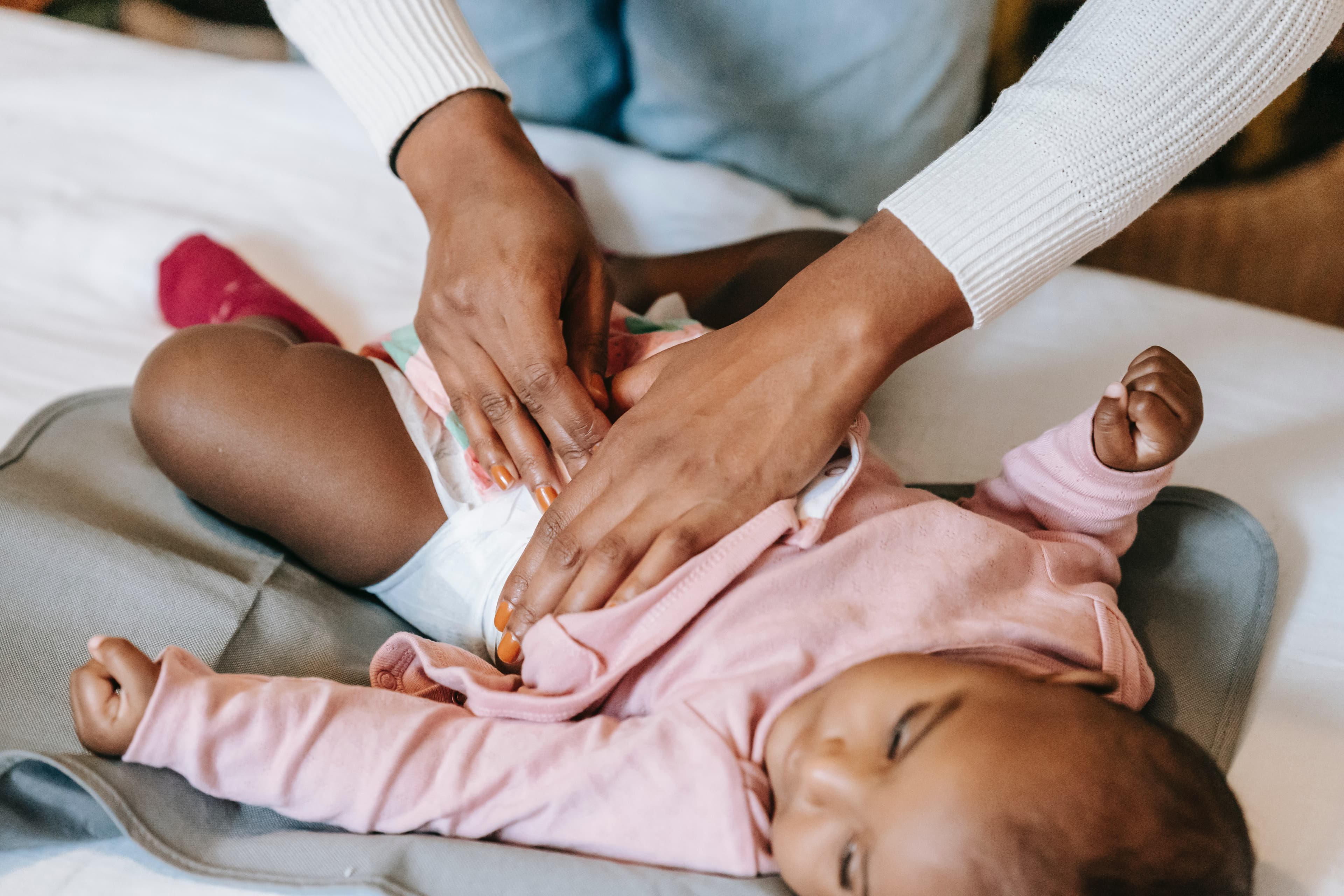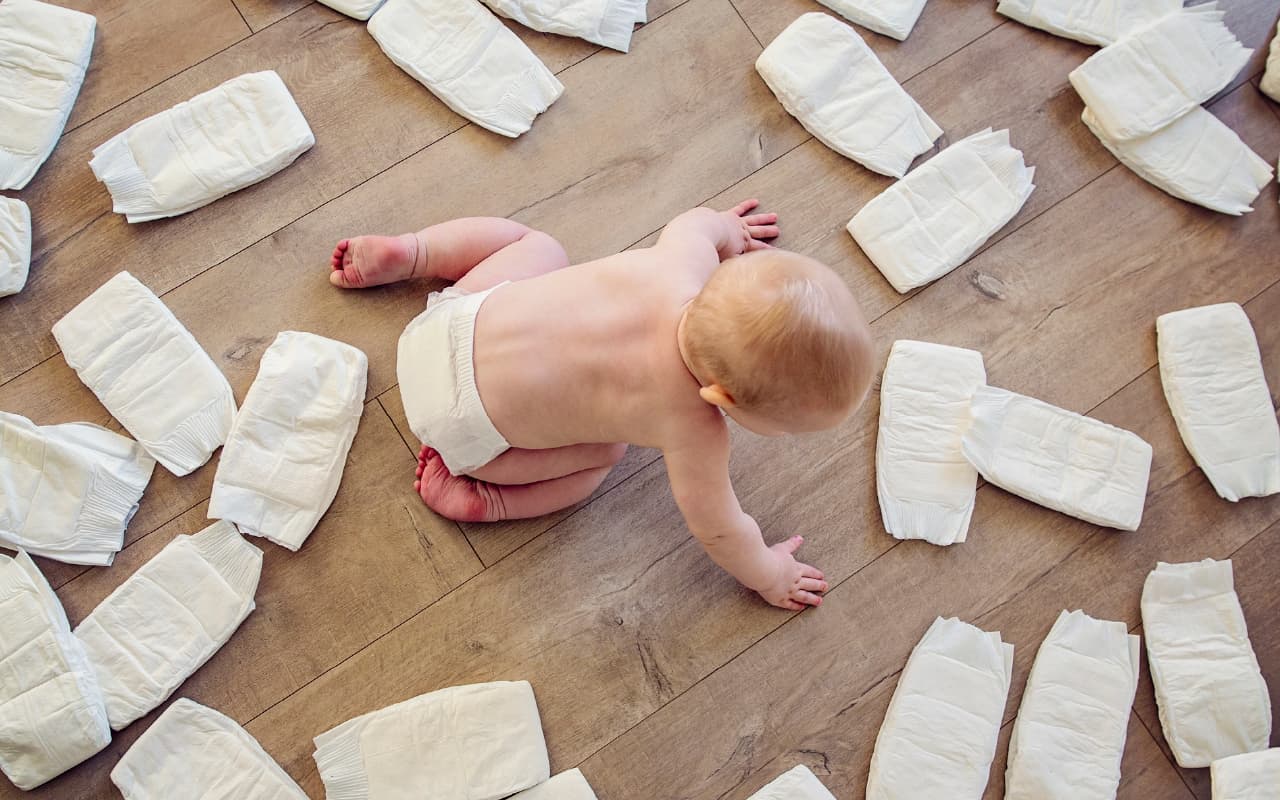Diaper rash is one of the most common skin problems in babies. Most infants have a diaper rash at least once during the first three years of their life. It most commonly happens between the ages of 9 and 12 months old, according to board-certified dermatologist and MyPsoriasisTeam contributing author Dr. Anna Chacon.
Though there’s no way to prevent diaper rash completely, there are things you can do to keep your baby’s skin healthy. In this article, we provide some actionable tips and tricks that you can use at home.
What is Diaper Rash?
Diaper rash happens when the skin under your child’s diaper becomes red, itchy, and inflamed. The irritation can occur anywhere a diaper touches, but it’s most common on the buttocks, genitals, pelvic region, and upper thighs.
What Are the Symptoms of Diaper Rash?
Symptoms of diaper rash in infants include:
Sometimes diaper rash isn’t apparent. If your baby is crying, screaming, or being unusually fussy during routine diaper changes, schedule an appointment with your baby’s pediatrician to make sure diaper rash isn’t at play.
Why Do Babies Get Diaper Rash?
Diaper rash can happen for many reasons, including:
Leaving on dirty diapers too long: Most pediatricians recommend changing your baby’s diaper every two or three hours or as often as needed. Newborn skin is soft and sensitive, and long-term exposure to urine and fecal matter causes skin breakdown and irritation.
Diapers that don’t fit: If your baby’s diaper is too tight, it may restrict blood flow and irritate the skin. On the other hand, if their diaper is too loose, the extra material may run against their skin and cause chafing.
Using new products: Babies’ skin barrier doesn’t fully develop until they’re older, making their skin sensitive and prone to rashes and skin irritation. Certain products, like baby wipes, fabric softeners, and diapers, contain additives, like lotions and scents, that can further irritate the skin.
Bacterial or fungal (yeast) infections: The skin beneath your child’s diaper is warm and moist –– a perfect environment for bacteria and fungi to thrive. To prevent infection, thoroughly clean your child’s skin between diaper changes, especially the creases and folds of their skin.
Having sensitive skin: Some babies are born with skin conditions, like eczema and seborrheic dermatitis, which increases the chances of diaper rash.
Dietary changes: Weaning your baby off formula and introducing them to solid food or adding new foods to their diet may affect their stools.
Steps to Prevent Diaper Rash
Don’t be alarmed if your baby develops a diaper rash. It is super common and doesn’t mean you’re a bad parent. Plus, there’s plenty you can do to prevent it from happening again.
Step 1: Change your baby’s diapers regularly.
“Immediately remove your baby’s diaper any time they urinate or have a bowel movement,” Dr. Chacon said. “If your child is in daycare, ask the staff to do the same.”
Step 2: Thoroughly clean your baby’s skin before putting on a new diaper.
Each time you take a dirty diaper off your baby, rinse their bottom and genital area with warm water. You can sit your baby in the bathtub or sink or hand rinse them with dry cotton balls or a wet washcloth to make sure you’re removing any urine or feces that can lead to rashes.
“Avoid scrubbing your baby’s bottom and never apply talcum powder,” Dr. Chacon said. “Afterward, use a clean towel to gently pat their skin dry, or let it air dry.
Step 3: Apply a barrier cream after each diaper change
Infant skin is very sensitive and is easily damaged. After each change, protect your little one’s most sensitive areas by applying diaper cream, paste, or ointment.
“If your kid frequently develops rashes, apply a paste, ointment, or lotion. Many diaper rash products contain time-tested ingredients, including petroleum jelly and zinc oxide,” Dr. Chacon said.
Step 4: Always wash your hands
The key to successful diaper changes is making sure your baby is as clean as possible. That means thoroughly washing your hands after each step of the changing process to avoid transferring germs.
“If you transfer germs or yeast to other areas of your baby’s body, a rash may occur,” said Dr. Chacon. “It’s vital that you and every other member of your family practice good hand hygiene.”
Step 5: Choose diapers that fit
No two diapers fit the same way, but there are important features to look for when choosing diapers. Dr. Chacon recommends selecting diapers that have adjustable tabs and good ventilation.
“Adjustable tabs make it easy to secure diaper closures without the garment being overly tight,” Dr. Chacon said. “Likewise, diapers with good ventilation allow the skin to breathe and prevent moisture from pooling.”
Step 6: Take occasional diaper breaks
Another way to reduce the risk of diaper rash is to take occasional breaks from diapers.
“Allow your infant to go without a diaper whenever possible,” Dr. Chacon said. “This natural and gentle technique allows your child’s skin to breathe.”
What If My Baby Has Sensitive Skin?
Babies with sensitive skin are more susceptible to diaper rash, but that doesn’t mean it’s something you have to live with.
“If your baby has eczema or other skin problems, search for diapers without scents or colors,” Dr. Chacon said. “If your child is sensitive to baby wipes, use a washcloth. A wet washcloth serves the same purpose and is much softer on infant skin.”
Takeaways
Most babies get diaper rash at some point during infancy.
If your baby has red or itchy skin, take immediate action. Acting early and quickly can prevent the rash from spreading and keep your baby’s skin healthy.
Dr. Chacon says, above all else, to remember the following:
When rinsing off your baby, use lukewarm water and gentle, fragrance-free baby soap or shampoo.
Apply soap to all of the dirty areas of your child’s skin, including the wrinkles and folds in the diaper region, and rinse well after washing.
Change soiled diapers immediately, even if they are just moist, to prevent irritation.
Need Help?
Are you a new parent struggling to prevent diaper rash? Do you have questions about diapers, diaper creams, or toileting? Whatever the case, we’re here to help!
Our expert Caregiving Specialists speak English and Spanish and are available to help. They’re familiar with our products and can make personalized recommendations for you and your family. Call (800) 696-CARE or send an email to support@carewell.com.


